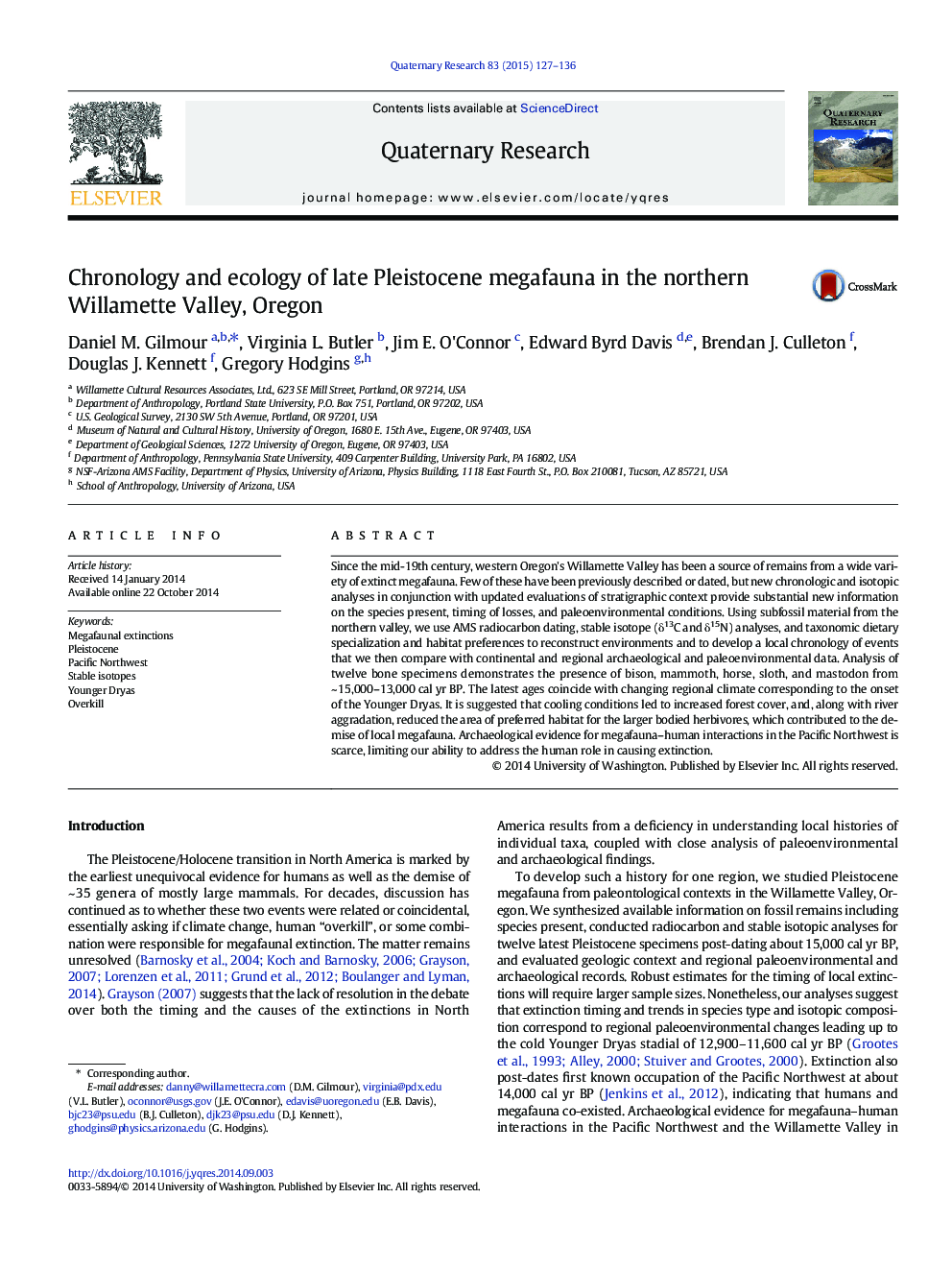| کد مقاله | کد نشریه | سال انتشار | مقاله انگلیسی | نسخه تمام متن |
|---|---|---|---|---|
| 1045189 | 944804 | 2015 | 10 صفحه PDF | دانلود رایگان |
Since the mid-19th century, western Oregon's Willamette Valley has been a source of remains from a wide variety of extinct megafauna. Few of these have been previously described or dated, but new chronologic and isotopic analyses in conjunction with updated evaluations of stratigraphic context provide substantial new information on the species present, timing of losses, and paleoenvironmental conditions. Using subfossil material from the northern valley, we use AMS radiocarbon dating, stable isotope (δ13C and δ15N) analyses, and taxonomic dietary specialization and habitat preferences to reconstruct environments and to develop a local chronology of events that we then compare with continental and regional archaeological and paleoenvironmental data. Analysis of twelve bone specimens demonstrates the presence of bison, mammoth, horse, sloth, and mastodon from ~ 15,000–13,000 cal yr BP. The latest ages coincide with changing regional climate corresponding to the onset of the Younger Dryas. It is suggested that cooling conditions led to increased forest cover, and, along with river aggradation, reduced the area of preferred habitat for the larger bodied herbivores, which contributed to the demise of local megafauna. Archaeological evidence for megafauna–human interactions in the Pacific Northwest is scarce, limiting our ability to address the human role in causing extinction.
Journal: Quaternary Research - Volume 83, Issue 1, January 2015, Pages 127–136
